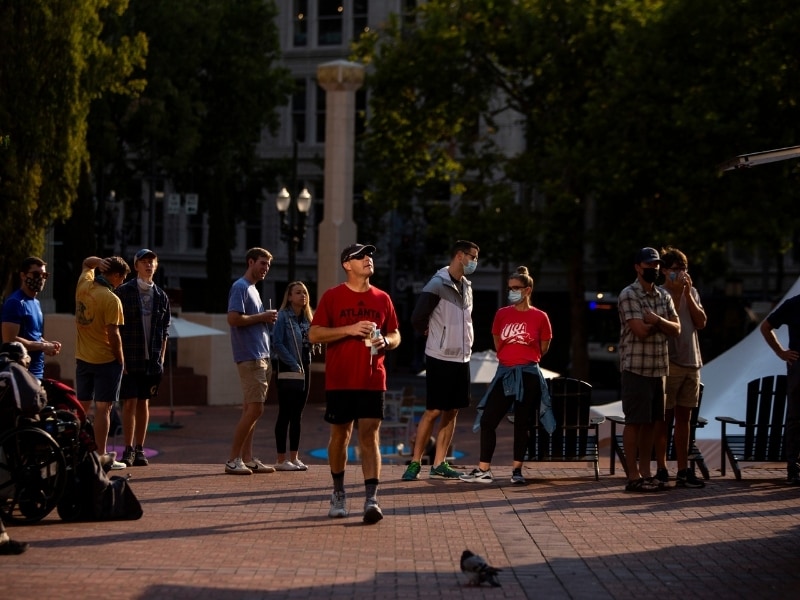
Covid-19 deaths surge across a weary America as a once-hopeful summer ends
More than 1,500 Americans are dying most days, worse than when cases surged last summer but far lower than the winter peak
 Pedestrians in downtown Portland, Ore., Sept. 3, 2021. Cases are starting to fall in some hard-hit Southern states, but nearly half of Americans are not fully vaccinated, allowing the Delta variant to persist. (Alisha Jucevic/The New York Times)
Pedestrians in downtown Portland, Ore., Sept. 3, 2021. Cases are starting to fall in some hard-hit Southern states, but nearly half of Americans are not fully vaccinated, allowing the Delta variant to persist. (Alisha Jucevic/The New York Times)
OVERLAND PARK, Kan. — A summer that began with plunging caseloads and real hope that the worst of COVID-19 had passed is ending with soaring death counts, full hospitals and a bitter realization that the coronavirus is going to remain a fact of American life for the foreseeable future.
Vaccination rates are ticking upward, and reports of new infections are starting to fall in some hard-hit Southern states. But Labor Day weekend bears little resemblance to Memorial Day, when the country was averaging fewer than 25,000 cases daily, or to the Fourth of July, when President Joe Biden spoke about nearing independence from the virus.
Instead, with more than 160,000 new cases a day and about 100,000 COVID patients hospitalized nationwide, this holiday feels more like a flashback to 2020. In Kansas, many state employees were sent home to work remotely again. In Arizona, where school mask mandates are banned, thousands of students and teachers have had to go into quarantine. In Hawaii, the governor has issued a plea to tourists: Don’t visit.
“The irony is that things got so good in May and most of June that all of us, including me, were talking about the end game,” said Dr. John Swartzberg, an infectious disease specialist at the University of California, Berkeley. “We started to enjoy life again. Within a very few weeks, it all came crashing down.”
The resurgence has left the country exhausted, nervous and less certain than ever about when normalcy might return.
©2019 New York Times News Service







